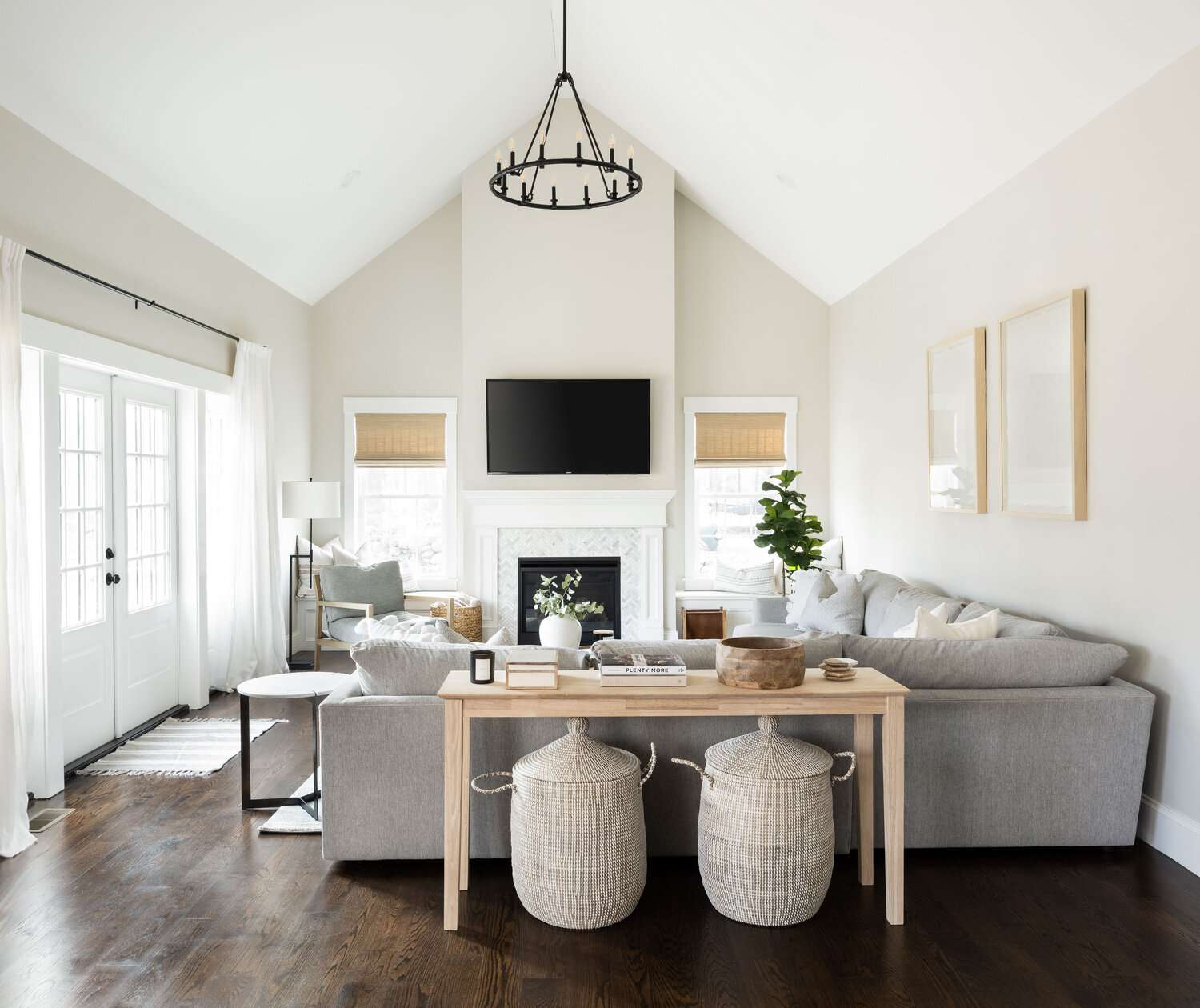Choosing the right high ceiling can dramatically transform your home. This guide deciphers the nuances of vaulted and cathedral ceilings, empowering you to make an informed decision. Discover how these architectural marvels enhance space and style, while also considering practical factors like cost, maintenance, and energy efficiency.
Decoding the Differences: Vaulted vs. Cathedral
Both vaulted and cathedral ceilings add volume and grandeur to a room, but they differ structurally. Understanding these distinctions is key to choosing the right fit for your home. Vaulted vs cathedral ceiling explains the core differences.
What is a Vaulted Ceiling?
A vaulted ceiling is any ceiling higher than the standard 8 feet, featuring an upward slope. Imagine a stretched canvas, pulled upwards at the center or sides, creating an airy, expansive feel. Vaulted ceilings come in various forms:
- Barrel Vaults: A continuous curve resembling half a barrel.
- Groin Vaults: Formed by the intersection of two barrel vaults, creating a visually captivating cross-vault.
- Dome Vaults: As the name implies, these ceilings curve into a spherical or partial dome shape.
- Rib Vaults: Characterized by supporting ribs across the arched surface, adding architectural detail.
Vaulted ceilings generally start around 10 feet high, but their versatility allows for greater height variations based on the design.
What is a Cathedral Ceiling?
A cathedral ceiling is a specific type of vaulted ceiling. It mirrors the pitch of the roof, resulting in a symmetrical, peaked structure. Picture the soaring ceilings of a grand cathedral, hence the name. This design inherently links the ceiling height to the roofline, often resulting in heights of 13 feet or more.
Weighing the Pros and Cons
Vaulted Ceilings: Embracing Versatility
Advantages:
- Design Freedom: Vaulted ceilings offer unparalleled customization, adaptable to various architectural styles and personal preferences.
- Natural Light: The sloped surfaces readily accommodate windows and skylights, maximizing natural illumination.
- Cost-Effectiveness (Potentially): While more expensive than standard flat ceilings, vaulted ceilings can be more budget-friendly than cathedral ceilings, especially with simpler designs.
Disadvantages:
- Maintenance: Accessing higher areas for cleaning and repairs can be challenging.
- Energy Efficiency: The increased air volume may lead to higher heating and cooling costs, but strategic insulation can mitigate this.
Cathedral Ceilings: Exuding Grandeur
Advantages:
- Dramatic Impact: Cathedral ceilings create a sense of awe and spaciousness, transforming even smaller rooms.
- Amplified Natural Light: The high, angled structure optimizes natural light penetration.
- Elevated Visual Appeal: Their inherent grandeur increases the aesthetic value of your home.
Disadvantages:
- Cost: Construction is typically more complex and material-intensive than vaulted ceilings, resulting in higher upfront costs.
- Maintenance: Reaching and maintaining these towering structures can be difficult and potentially dangerous, often requiring professional assistance.
- Energy Consumption: The vast air volume can pose significant challenges for heating and cooling, demanding careful planning for insulation and ventilation.
Cost Considerations: Budgeting for Elevated Ceilings
Vaulted and cathedral ceilings are undeniably more expensive than standard flat ceilings. This cost difference stems from the increased complexity of construction, demanding more materials and specialized labor. Factors influencing the final price include:
- Ceiling Type: Cathedral ceilings, due to their height and structural requirements, are often more expensive than vaulted ceilings.
- Room Size: Larger rooms require more materials and labor, directly impacting the overall cost.
- Existing Structure: Retrofitting an existing home with a vaulted or cathedral ceiling can be more complex and costly than incorporating it into new construction.
- Design Intricacy: Ornate designs, exposed beams, and unusual angles add to the complexity and cost.
Beyond the Basics: Untapped Potential
- Psychological Impact: The height and shape of a ceiling can significantly influence the perception of space and the emotional atmosphere of a room. Vaulted ceilings, with their diverse forms, can create a sense of intimacy or expansive grandeur, while cathedral ceilings evoke a sense of awe and reverence.
- Modern Adaptations: Architects are constantly innovating, incorporating modern materials and techniques—like exposed steel beams, integrated lighting systems, and sustainable insulation—into vaulted and cathedral ceiling designs, bridging tradition with contemporary aesthetics.
- Regional Considerations: Climate and local building codes play a crucial role. Snow load in northern regions might necessitate structural reinforcements, while warmer climates might benefit from enhanced ventilation strategies in conjunction with these ceiling styles.
- Acoustics: The large volume of space created by these ceilings can lead to acoustic challenges, like echoes and reverberations. Strategic placement of rugs, drapes, and acoustic panels can help mitigate these issues, but it’s essential to consider the acoustic impact during the design phase.
- Hybrid Designs: Blending elements of vaulted and cathedral ceilings within a single space can create unique architectural effects, offering a customized balance of grandeur and design flexibility.
Making the Right Choice
The ideal ceiling for your home depends on your unique needs, budget, and aesthetic preferences. Consider these factors:
- Architectural Style: Vaulted ceilings, with their adaptability, complement a wider range of architectural styles. Cathedral ceilings, while stunning, might feel out of place in some modern or minimalist homes.
- Lifestyle: Think about your lifestyle and maintenance preferences. Are you prepared for the potential challenges of cleaning and maintaining a high ceiling?
- Energy Efficiency: Consider the potential impact on your energy bills. Invest in high-quality insulation and ventilation to mitigate heat loss or gain.
Consulting with an architect or experienced builder is highly recommended. They can offer expert advice, tailored to your specific situation, and help you navigate the complexities of incorporating these dramatic ceiling styles into your home. By carefully weighing the design dilemmas, you can choose a ceiling that not only elevates your home’s aesthetic appeal but also enhances its overall value and your long-term comfort.
- The Best Battery Picture Lamps for Effortless Artwork Illumination - April 1, 2025
- Double Sink Bath Vanity Tops: A Buyer’s Guide - April 1, 2025
- Bath Towel Measurements: A Complete Guide to Choosing the Right Size - April 1, 2025










